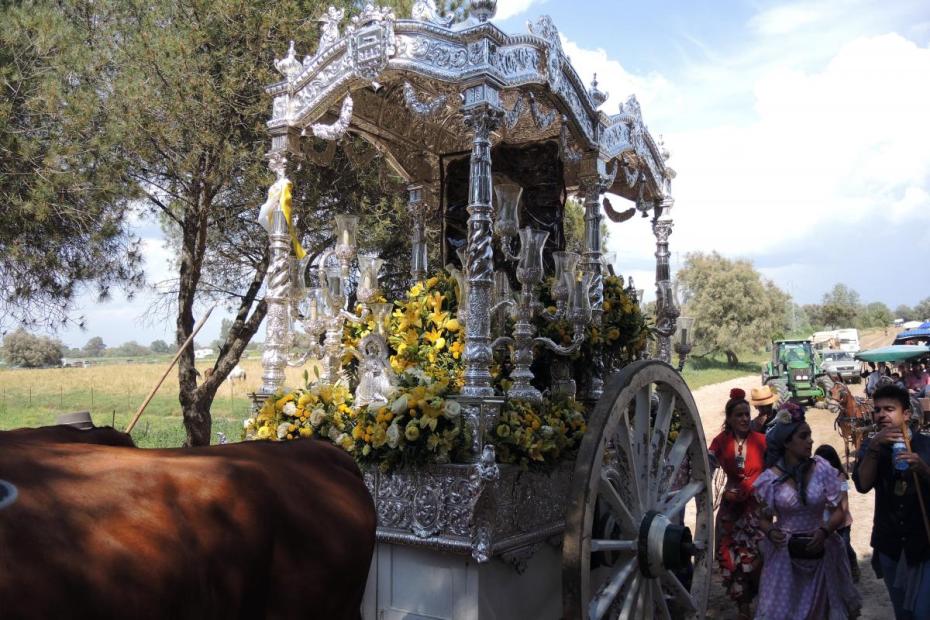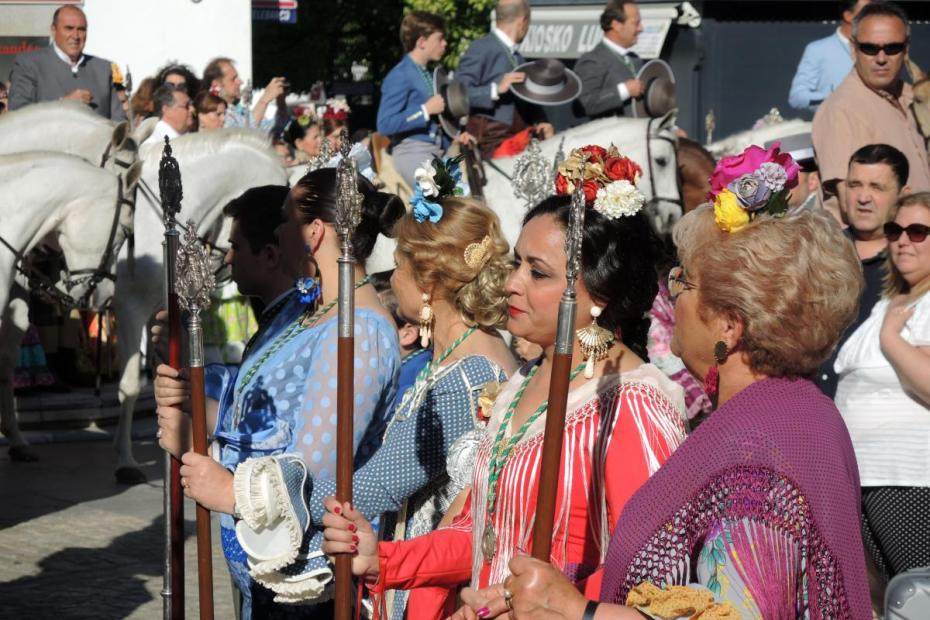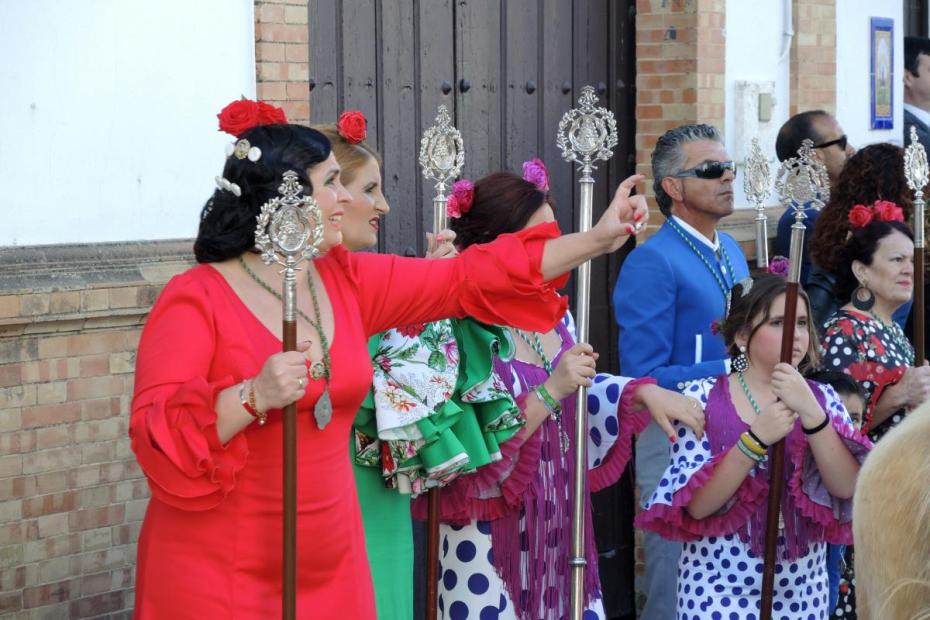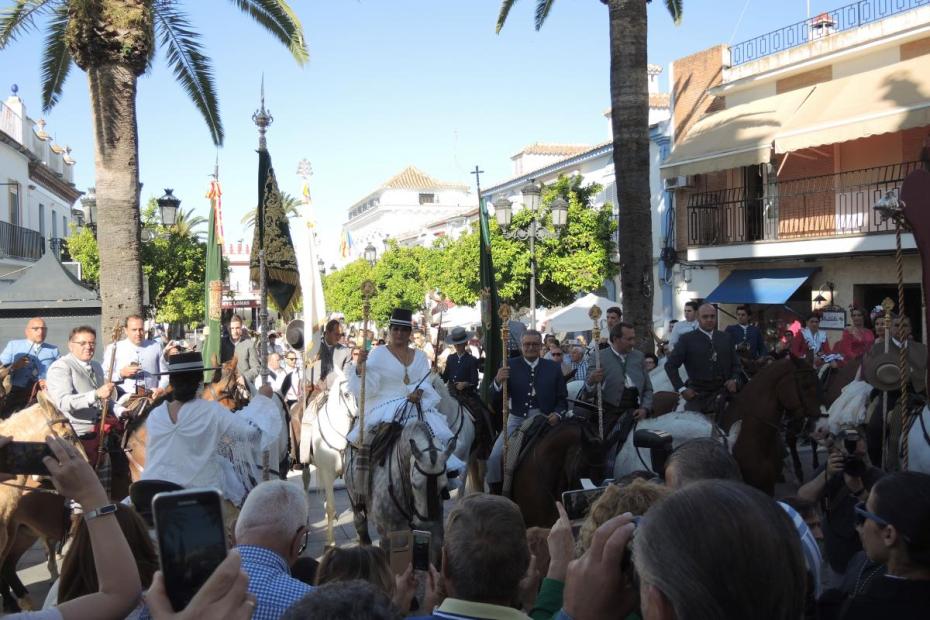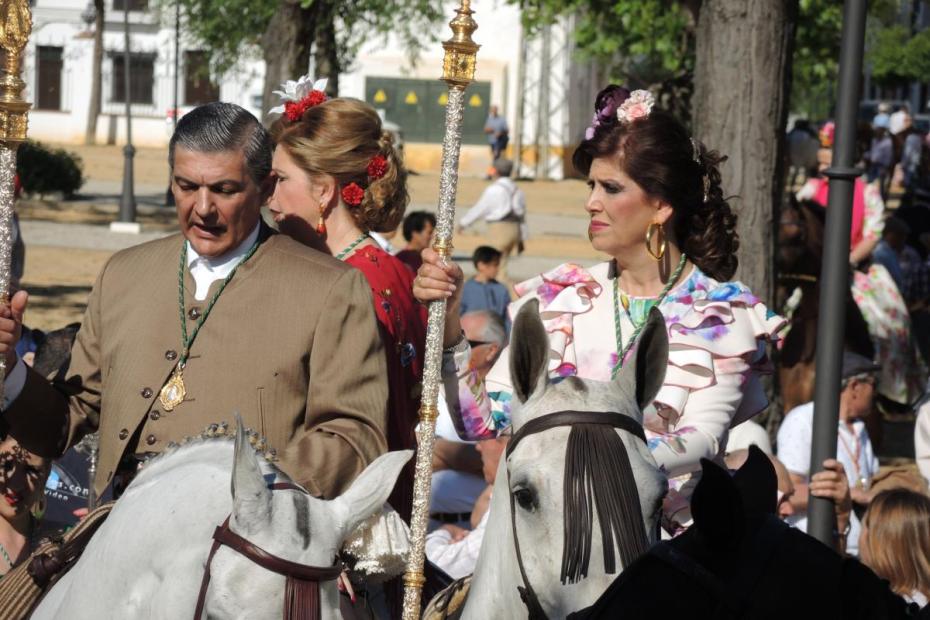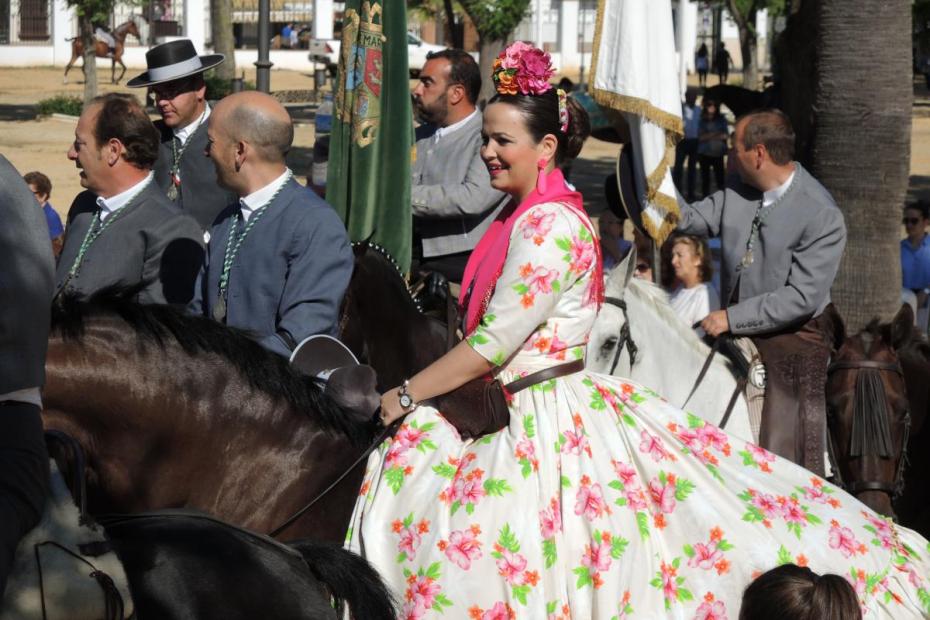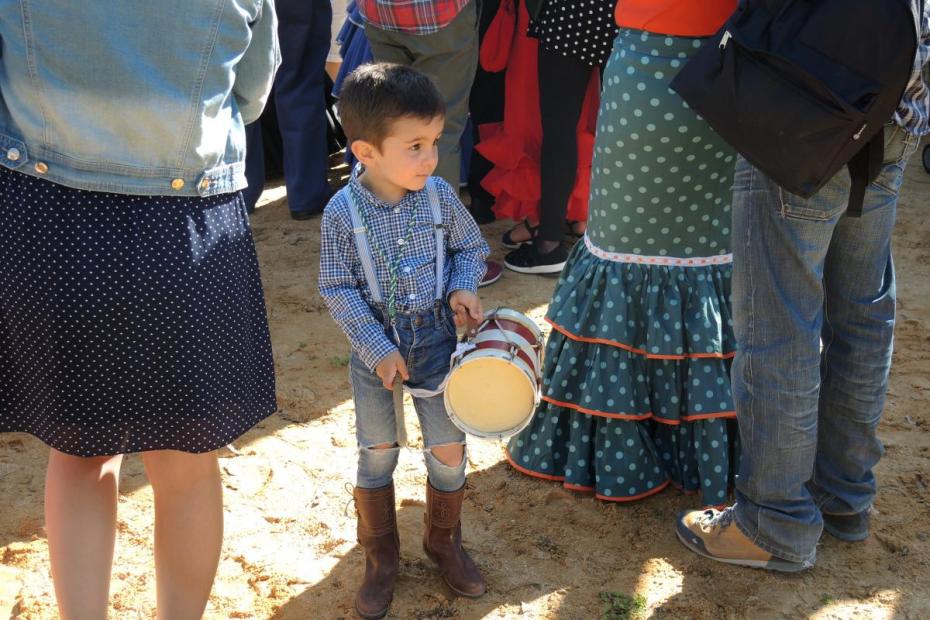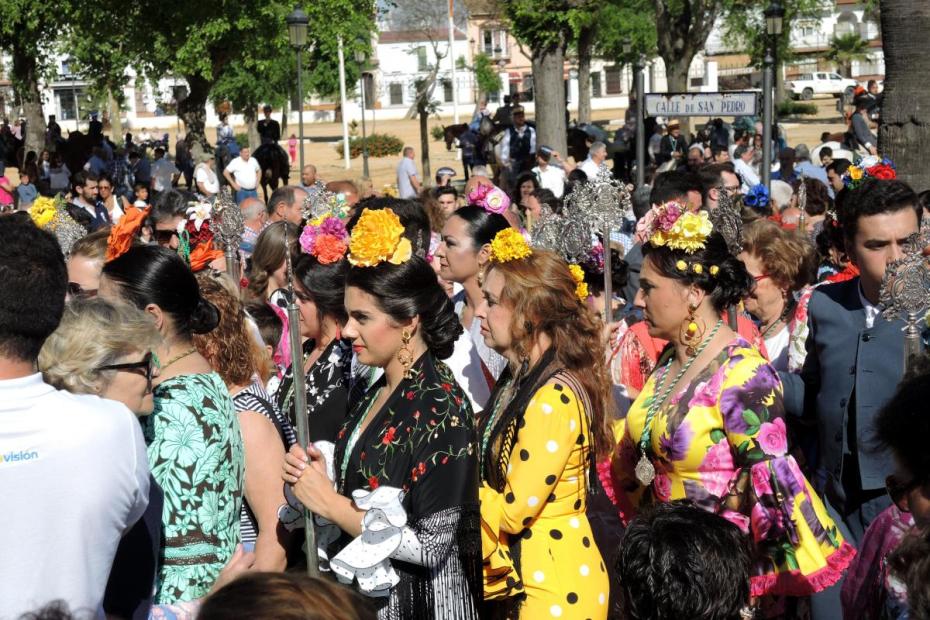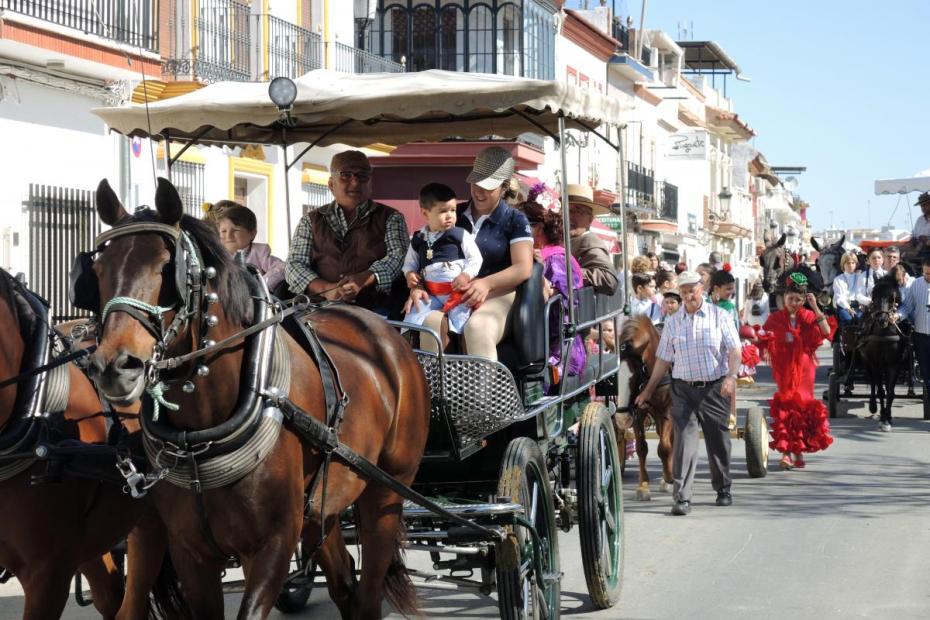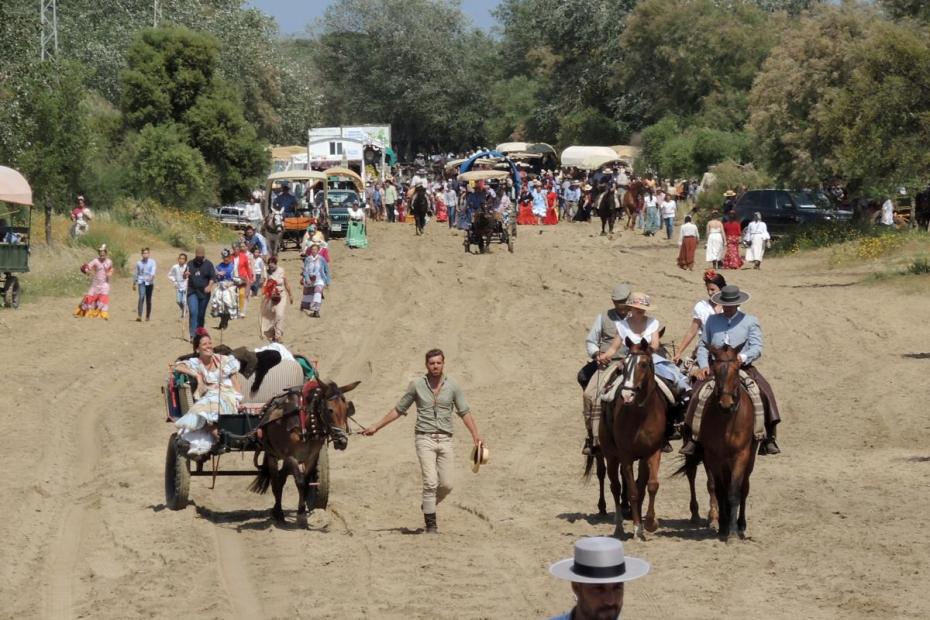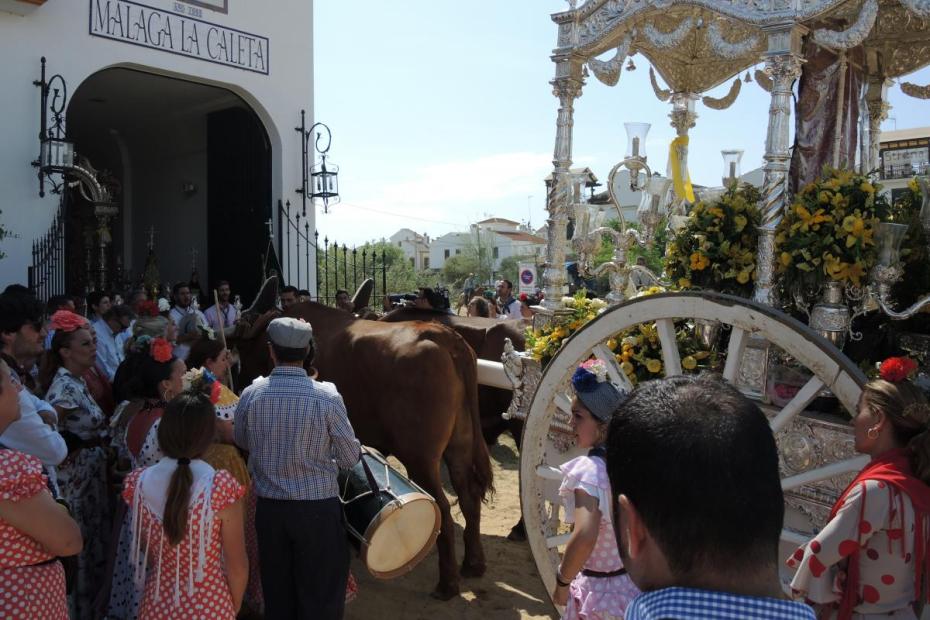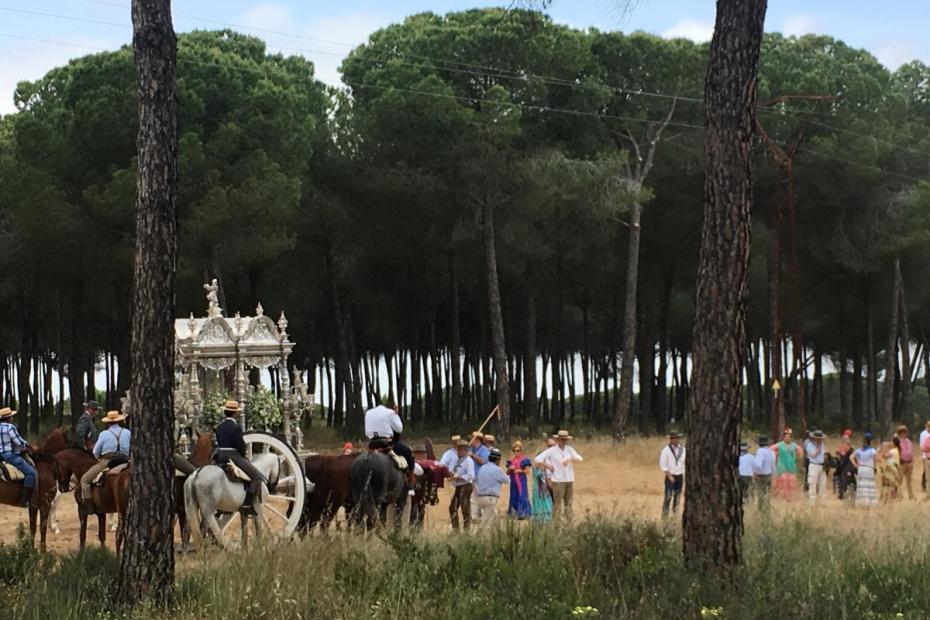For members of the 124 brotherhoods who form the core of the pilgrimage to El Rocío, the process of getting to and from the feast is as important as the destination. Rocieros, as the pilgrims call themselves, spend at least a day or two traveling, on horseback or in horse-, mule-, or tractor-drawn wagons with fellow members of their brotherhood along one of four dedicated pathways through the countryside and forest. Brotherhoods travel in specific order so that they can arrive in town in the order of their founding. The wagon trains are a sight to see as they pass through the forests, bedecked for the feast.
For brotherhoods from nearby towns, the pilgrimage, or romería, begins with some event in the village or town. For many, the preparations begin long before. In Almonte (pop. 23,000), home of the Hermandad Matriz that organizes the pilgrimage, the brotherhood prepares extensively, and precedes its pilgrimage with a nightly novena and a special Mass the Sunday before.
Their romería begins in style. On the Wednesday before the feast, there is a costumed procession from the parish church through Almonte’s streets to an outdoor Mass in a plaza, then around the town some more, before the pilgrims embark on their 15-kilometer journey to El Rocío. The parade, pictured in a video here, begins with small fireworks, then a small corps of drums and flutes playing a tune known as paso de carretas. Its music, horses, and costumes ensure that the whole town is aware of the departure. The horse and wagon journeys typically last one or two days each direction. Brotherhoods coming from towns located at greater distances typically travel by coach or other means to some rendezvous point where they can begin the festive procession.
The brotherhoods’ pilgrimages are beautifully choreographed events. Some 2,300 kilometers of trails are set aside for their wagons. The wagons are are often elaborately decorated and stylized, none more so than the wagon carrying the simpecado, the gold- or silver-embroidered Marian banner of the confraternity.1 Even the most basic wagons are a sight to see, like covered wagons from the 19th century. Despite the dust, women are dressed in brightly colored flamenco dresses (and boots underneath for the long walk in the sand and dust) and many of the men are formally dressed in traditional corto-jacketed costumes, on horseback. Others travel in simpler wagons and clothes. One occasionally sees cars among the wagons, but not often. The pace of the pilgrimage moves no faster than people can walk or mules or oxen can pull the wagons, but people clearly enjoy themselves along the way.
Brotherhoods stop in designated spots for lunch and for dinner and to camp out overnight. The mood at each of these places is festive, with campfires, guitar music, songs and celebration. A mother and daughter described a four-day trip from Rota, on the coast, that included a crossing of the Guadalquivir River, facilitated by military ferries. “It’s very beautiful because in the preserve there are many deer, many wild boar, it’s one of the most beautiful trails.” The mother recounted, “On the trail every day there is a Mass at 9 a.m., at 12 there is the Angelus, and at midnight a Rosary. All along there are many religious moments. The theme is around the Virgin. The sevillanas [Andalucian-style guitar songs sung en route] depict the Virgin, the Child, the town, the area we walk through.”
The organization required to carry off the travel to and from El Rocio is extensive. Port-a-potties and are placed at designated spots along the way, and a reported 5,000 police are engaged to halt traffic at road crossings.
Some pilgrims, especially those not belonging to a brotherhood, drive to El Rocío, perhaps to stay for the whole feast, perhaps for the day. Since cars are not allowed in town for the main days of the feast, they park in massive fields surrounding town, while the hermandad processions are allowed to enter directly into town.
Once the brotherhoods arrive in El Rocío, they often bring their simpecado wagon to greet members of other brotherhoods, particularly those who sponsored their membership, and await their turn for their presentation at the sanctuary, after which the feast begins for them.
- 1Devotees at the feast claimed that the word simpecado derives from the words sin pecado, “without sin,” a reference of the immaculate conception.
